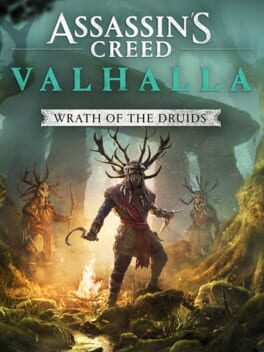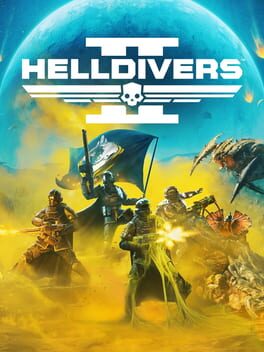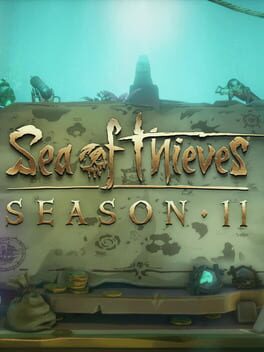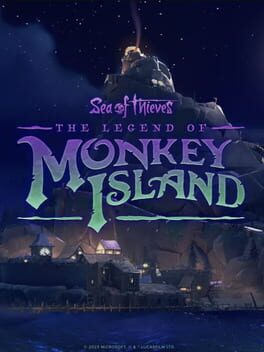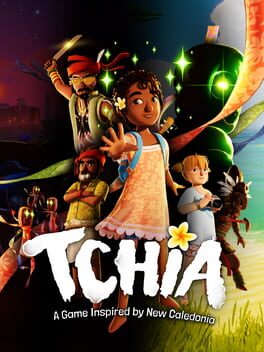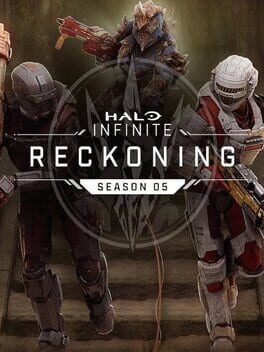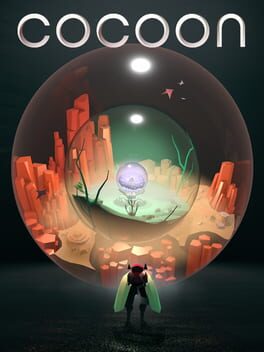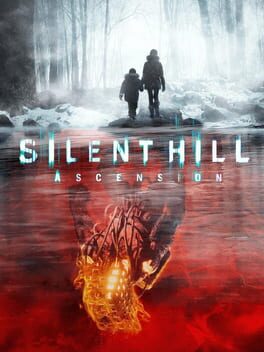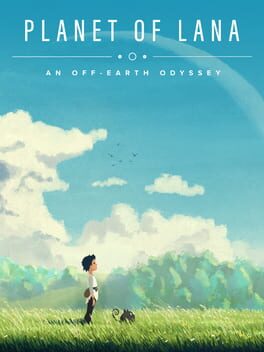ARW3
BACKER
A decent addition to Eivor's story, providing more of AC Valhalla's core gameplay loop without too much new variation. In fact, some aspects of the campaign are repetitive in that they mirror activities that push the base-game's campaign forward. It tells a serviceable tale set in an interesting period of Irish history, with clever incorporation of notable historic figures. 9th Century Ireland is beautifully brought to life in "Wrath of the Druids," from the Giant's Causeway to Dublin's harbor.
2024
This game absolutely rules, when you can play it. Looking past the abysmal server issues at launch, likely attributable to an unpredictably enormous debut, this game delivers. It is bombastic and has a polished gameplay loop. It is hilarious in its incessant parody of militaristic expendability and feverous patriotism. Most critically, it delivers emergent gameplay moments in spades.
Although fun in solo play, it is much better to engage with an outstandingly cooperative community of strangers or your friends when delivering managed democracy in Helldivers II. The game's dynamism is amplified by the presence of other players. Team kills, coordinated airstrikes, team reloads and a hug on the battlefield all color the cooperative experience.
There is a shocking amount of gameplay diversity that derives from a robust ordinance ("strategem") system and a good spread of mission designs. Whether it be the hectic nests of a Terminid planet or hordes of Automatons marching towards you out of a jungle's tree-line, there is a filmic nature to nearly every encounter. In my 35+ hours in game (with other hours of my 46 total in servers queues), there were some hysterical exploits of the physics-system and harrowing escapes from certain doom that had us laughing or cheering for hours on end. There is irresistible charm in the parody at play here, whether it be a rag dolling player flying through the sky yelling "LIBERTYYYY" or the cheeky combat tips you get between missions. There are many such examples. Add in some crisp shooting, both 1st and 3rd person, and you have a hell of an experience here. Truly, taking out alien and robotic hordes with your pals has never been so damned cool.
Although fun in solo play, it is much better to engage with an outstandingly cooperative community of strangers or your friends when delivering managed democracy in Helldivers II. The game's dynamism is amplified by the presence of other players. Team kills, coordinated airstrikes, team reloads and a hug on the battlefield all color the cooperative experience.
There is a shocking amount of gameplay diversity that derives from a robust ordinance ("strategem") system and a good spread of mission designs. Whether it be the hectic nests of a Terminid planet or hordes of Automatons marching towards you out of a jungle's tree-line, there is a filmic nature to nearly every encounter. In my 35+ hours in game (with other hours of my 46 total in servers queues), there were some hysterical exploits of the physics-system and harrowing escapes from certain doom that had us laughing or cheering for hours on end. There is irresistible charm in the parody at play here, whether it be a rag dolling player flying through the sky yelling "LIBERTYYYY" or the cheeky combat tips you get between missions. There are many such examples. Add in some crisp shooting, both 1st and 3rd person, and you have a hell of an experience here. Truly, taking out alien and robotic hordes with your pals has never been so damned cool.
A wonderful ode to a nostalgic franchise for many. The Legend of Monkey Island DLC is more substantial than I initially thought, bringing to life what was essentially full-length puzzle game, running me some 8 hours in length at least. It's clever, charming and is bolstered by its reverence to the source material. The familiar faces here are well voice acted and animated with the endearing charm Sea of Thieves clearly prides itself on. Although a bit long in the tooth in some parts... this root-beer glorifying, quip laden, insult-sword-fighting romp is worth your time if a "3D point and click adventure" sounds like something you'd fancy.
Receiving the Monkey Island theme as a reward shanty for doing all the DLC's commendations was a wonderful bonus :)
Receiving the Monkey Island theme as a reward shanty for doing all the DLC's commendations was a wonderful bonus :)
2018
One of the most innovative, sand-box driven multiplayer experiences I have ever encountered. Unique, artful, dynamic, charming and a joy with friends. Although core tasks might seem repetitive at a surface level, the world invariably lends countering dynamism through every session.
If you can get past the risk of grieving from unfriendly pirates, Sea of Thieves shines as a beautiful open world sandbox for you and your friends to embark on voyages permeating stunning art direction, satisfying progression, and endless shenanigans.
If you can get past the risk of grieving from unfriendly pirates, Sea of Thieves shines as a beautiful open world sandbox for you and your friends to embark on voyages permeating stunning art direction, satisfying progression, and endless shenanigans.
Brilliantly designed metroidvania with a high degree of polish. It excels in its interesting combat, brilliant traversal mechanics, worthwhile exploration, and strong art direction. The narrative certainly takes a back seat here, although a slew of interesting lore can be obtained by way of lengthily written collectibles. The actual delivery of the story teeters on being a bit cheesy at times, but it is overall serviceable. Puzzles found in Mount Qaf are well-integrated with the stellar platforming mechanics, so they added extra flare onto side quests that weren't particularly interesting from a story perspective.
Prince of Persia: The Lost Crown is an excellent metroidvania that should be enjoyed by any fans of the genre. It should also be commended for its own unique combat, traversal, progression and vibrant art styling.
Prince of Persia: The Lost Crown is an excellent metroidvania that should be enjoyed by any fans of the genre. It should also be commended for its own unique combat, traversal, progression and vibrant art styling.
2012
It took me a long time to get to FF7, but I was absolutely floored by this game. The ambition on display here, surely unprecedented for its time, is outstanding. Fantastic customization by way of the materia system and deep RPG elements, a notably memorable cast, and an exceedingly well realized world all contribute to an overall package that feels pretty damned special. Better late than never!
2023
Lies of P is both a surprising and outstanding effort. Round8 has brought forward the Bloodborne formula perfectly reimagined for 2023, with many exciting additions that distinguish it as something uniquely their own. Although level design is fairly linear, there are clever scenarios for returning to old levels. Mob design might have unfortunately taken too much homage to Bloodborne, but elsewhere Lies of P really shines. There is a great level of customization in "how" you play, with evolved gameplay mechanics including the legion arm, weapon customization, and smart build-crafting. QoL was not an afterthought, with aspects of Lies of P being infinitely more intuitive than that of most Souls games. Utilizing open-domain liberties to set this world in a dystopian version of Pinnochio was an inspired decision. The story remained intriguing and shockingly easy to follow along when compared to its fellow souls-likes. Lies of P is set to get a sequel, as has already been announced, and given the truly unpredictable ending this game treated players to... I am beyond excited to see it.
2023
Tchia is a beautiful tribute to the tiny nation of New Caledonia. The developers have built a gorgeous world that is bustling with personality and quirks attentive to New Caledonian culture. The music and use of native language were aspects I found to be particularly effective. Unfortunately, I did find the overall pace of Tchia dragged at times. In many ways, this charming world is undermined by bloat and haphazardly scattered map markers or upgrade economy. Similarly, the strong and heartfelt story Tchia tells is held back by redundancies in the gameplay loop and sequences that are dragged out without purpose. Traversal in Tchia is also laborious. The game has limited fast travel locations and frequently tasks players with lengthy travel, but does not provide ample means for efficient transportation.
Tchia is an impactful game that I would recommend without hesitation, but the initially charming gameplay loop overstays its welcome. This game truly wears its heart on its sleeve, and is an inspiring tribute to a pulchritudinous landscape and endearing culture.
Tchia is an impactful game that I would recommend without hesitation, but the initially charming gameplay loop overstays its welcome. This game truly wears its heart on its sleeve, and is an inspiring tribute to a pulchritudinous landscape and endearing culture.
Since the great "Winter Update" Halo Infinite has been firing on all cylinders. Forge continues to provide a plethora of diverse, creative and competitive experiences to enjoy. However, where Halo Infinite continues to shine and separate itself from prior Halo games is the robust incorporation of these experiences into matchmaking. As it stands, there are probably well over 80 unique maps in Halo Infinite. The sandbox continues to expand with the likes of the "Bandit EVO" and new Repair Field equipment. Firefight has made a triumphant return and is accompanied by the unprecedented creative power of 343i's Enemy AI Forge Toolkit. The "live service" aspect of Halo Infinite is thriving at the moment. There has been meaningful, calculated roll-outs of content to keep the season fresh since its launch. Halo 3 Refueled, Combined Arms, Firefight's Mid-Season Update, and the upcoming Holiday event all flesh out this season. Season 5 marks a maturation point for Infinite as a live service game, one that I hope continues to shine.
343i has a roadmap of interesting items to continue to explore, including a Match Composer, cross-core shoulder pieces, new net code built from the ground up, and other items. I personally would love to see the return of Griffball, now that the Hammer feels particularly great. Additionally, Bomb Assault medals have been spotted in the game's code, which is also encouraging to see. More Forge map implementation into BTB and Squad Battle would also be welcomed additions in the seasons ahead.
343i has a roadmap of interesting items to continue to explore, including a Match Composer, cross-core shoulder pieces, new net code built from the ground up, and other items. I personally would love to see the return of Griffball, now that the Hammer feels particularly great. Additionally, Bomb Assault medals have been spotted in the game's code, which is also encouraging to see. More Forge map implementation into BTB and Squad Battle would also be welcomed additions in the seasons ahead.
2023
2023
Absurdly clever puzzle game. More clever than I. I have absolutely no clue what this story was about either... but it was an exceedingly cool experience. Unique mechanics, stylish art direction, absolute banger of a game. I know this was made by developers with "Inside" pedigree, but I still walked away immensely surprised and impressed.
The pitch for Silent Hill: Ascension represents a reasonable, albeit dubious, idea. In actuality, we received something worse than our greatest fears. That's the true horror here, the product itself, not any component of the story it tells. Predatory, cheap-appearing, dysfunctional, manipulative and tone deaf - Silent Hill Ascension is itself more evil than anything you might see in a modern horror game.
2023
Alan Wake II is an absolute masterpiece, defying expectations and transcending the normal bounds of the medium to explore storytelling in a completely unprecedented format. It is brought to life through masterfully crafted art direction, graphical prowess, chilling sound design, enchanting performances and powerful music. It is an emboldened, metatheatrical, multi-media driven, survival horror game setting place in a lovingly crafted connected universe. Sam Lake has proven once again that he is a virtuoso of modern storytelling. His team shares a vision of salient ambition.
Back in September of this year the website "The Gamer" published an opinion piece titled, "2023 Has been a Horrible Year for Gaming." It was, of course, meant to be provocative and invite readers into an ongoing conversation around problematic trends in the industry: incessant lay-offs as companies haphazardly excise perceived sources of "bloat" without accounting for their heads' taking ownership over their gluttonous habits and actions during the pandemic. Indeed, this commentary should of course be considered alongside problematic cultures manifesting within the AAA development space and the completely unsustainable means by which many of these blockbuster games are being made. 2023 has also been a monumental year for video games. It is without a doubt one of the greatest, ever. The machinery of the game industry has caused much suffering to its artists, but we should also acknowledge the onslaught of phenomenal video games that have managed to release in this post-pandemic development era.
Enter, Remedy Entertainment, who have chosen to return as a true champion of light. They have, outstandingly, delivered on sustainable budgets and time structures. They developed the 2019 hit "Control" with uncompromised graphical and technical prowess at a mere fraction of what we might see with other AAA hits. This rings true with Alan Wake II as well, which has already at the time of my writing recouped its development costs. They continue to keep their staff from project to project, and once again with Alan Wake II (shortened to AW2 throughout this review) they bring forward many of the lovely faces they've been working with for years… in reprised, reimagined, and new roles.
For 13 years, as he has outlined for us, creative director Same Lake has wanted to make a proper sequel to 2010's "Alan Wake." He has stood on this promise and dream with stoic determination, or perhaps more appropriately, "sisu." Finally, we have it, his initiative brought forward in Alan's highly anticipated return. I believe Sam Lake when he says he is grateful it took so many years to logistically make this project viable, because there is now a cauldron full of bubbling ideas seasoned and adjusted to perfection after the learnings of many other projects since 2010. Frankly, Alan's overwhelming journey is reflective of Remedy's own learnings and attempts to manifest this game from writing to reality.
Making a sequel to a cult classic is truly no easy task, especially when you have chosen to completely reinvent the genre it will abide by. "Alan Wake" (2010) certainly had unnerving elements, but ultimately it was a campy jaunt through what the protagonist told us was a horror story. You often fought hordes of Taken, plowed them down with cars, and had plentiful access to ammunition and batteries for your trusty flashlight. AW2 grounds the experience. The resource economy is well tuned, where every bullet, bandage and battery pack counts. A push-and-pull of exploration exists, which promises more invaluable resources but at the possible cost of spending more to survive. There are periods of suspenseful silence and uneasy tranquility, inviting players to let their guards down before suddenly being attacked by 1-3 Taken. Frankly, there is one thing hasn't changed since 2010: there are few gameplay moments more satisfying than shattering a Taken's shadow shield with a burst from your flashlight, followed immediately by a blast from your trusty revolver or shotgun. In AW2 the guns feel punchy and impactful, but anything that might feel overpowered naturally suffers from resource scarcity. Combat isn't necessarily a focal point of this experience, but what is here feels good and responsive. The crowds of enemies are, as previously alluded to, notably toned down compared to the original game. However, the campiness is still present. AW2, for as much as it revels in jump scares, pitch-black environments, or horrifying scenes… loves throwing in a little bit of zaniness at every other corner. "Wonderfully weird" is my recurring phrase for Remedy video games… it continues to be apt here.
Alan Wake II explores new-form storytelling. What is accomplished here is not paralleled by any other game, and Remedy will make you believe that this is the only medium by which they could accomplish this. It is uncompromising and tenacious in its efforts to lead a completely unique experience. Interwoven into the plot are jaw-dropping set pieces, seamless integration of expertly acted live action footage, and a captivating soundtrack. In this nightmare, everything around you is riddled with as much art as there is darkness. Thematically, as you will find with many facets of Alan Wake II, this works perfectly. The Dark Place and Cauldron Lake feed off creativity. The very lore that tells us fiction might manifest reality in this place invites the submission of art to wield this power. Whether it be to bend it to one's will in a play for power, the ramblings of a mad creative, or a desperate act to survive, you will find art everywhere in Alan Wake 2. The absurdly proficient art direction, graphical fidelity, and sound design all serve this well. This is certainly a game meant to be played with headphones, complete with haunting ambient tones and often terrifying directional audio. Even the technical prowess on display is a means by which to capitalize on AW2's multi-faceted approach to storytelling, allowing for instantaneous transitions in and out of live action pieces from controlled gameplay. Alan Wake II plays plenty homage to its inspirations, from "Twin Peaks" to Remedy's own work in "Max Payne," you will find nods and references to real-life art everywhere. AW2 is certainly not afraid to broach metatheatre throughout its own narrative, embodying the campy nature of its predecessor by doing so. The Poets of the Fall (and their alter ego, The Old Gods of Asgard) make a dazzling return as well. The music choices throughout are excellent. I made sure to jam out with end of chapter song every single time, each of which remarkably coincided with the themes of the concluding chapter. Much can be said about how Remedy chose to characterize this world, but that does not even scratch the surface of other narrative techniques employed here: inspired use of dual protagonists and the ongoing construction of the Remedy Connected Universe should also be discussed.
Agent Saga Anderson and Alan Wake are notably different protagonists, with equitable contributions to the story, in spite of the game's title. Saga represents a newcomer to Bright Falls and is fairly naïve to the altered world event occurring there in 2010. In her segments Remedy heralds in a "True Detective" style to building the narrative, demonstrating Saga slowly put together the sensible through-lines within a maddening ocean of information. Her segments often are slower paced, plotting, and inspire horror through tension or unnerving encounters in the "real world." Saga witnesses firsthand the human consequences of the horror story in a way Alan is not privy to while trapped in The Dark Place. Alan's segments, on the other hand, are notably more weird. The Dark Place's rules are loose and poorly understood, by him and us. The vastness of the Dark Place is on full display here. Alan, stuck here 13 years, remarked for us long ago that its influence was not nearly as confided as observers expected. "It's not a lake, it's an ocean." Its depths also represent the unconscious mind, although burdened with darkness and a seemingly endless loop of directionality, thus allowing its vastness to directly contribute in driving Alan past the brink of insanity. AW2 continues the franchise's ongoing themes of reality, creativity, and the power of storytelling. It pulls these threads in new directions, challenging the rules it establishes and inviting a greater depth of exploration. Deeper and deeper it seems to go, truthfully making it hard to stop thinking about AW2 even after credits roll. Alan's wrestle with identity throughout it all is brought to life with a captivating, page-turning performance. He reckons himself everything from husband to writer to monster. As Alan, more questions will arise than answers, but not in a cheap or dissatisfying way. He too plays the role of "detective" and utilizes various light puzzles to explore the nature of murders occurring in the real world that might just be directly inspired by his writings. He must navigate what feels like "loops," first introduced in Alan Wake: American Nightmare, where he must suffer through repeated events with slight variations. He is constantly left to question if he is in the last one? If they will end at all? If the content of these loops can be in any way influenced or changed through his actions, or are instead up to predetermined fate? The enemies in these segments also are questionable in their sheer threat. Distorted shadows approach you in masses… many of which will dissipate yet still others will take more solid form and attack with little warning. This adds a level of tension to every encounter unique from the quietness we experience with Saga, where your ammo conservation demands reservation in the face of constant stimulation. Alan and Saga's tales connect in a natural, understandable manner and in many ways help make two stories form one cohesive narrative. That goal takes both metaphoric and literal form, because of course it does.
Lastly, I want to speak a bit to what is building here with the "Remedy Connected Universe." With just 4 games now, including American Nightmare, it already feels like it has the makings of something special. Familiar faces from Control are seen in AW2 in ways I will not divulge here, but in charming capacity that respects recurring players and invites intrigue from new ones. Callbacks are tactful, ranging from cute and small acknowledgements to huge payouts. Old faces return from prior games, with no stories to be told. Others are yet alluded to. Small things like the "Drink 'Em Both Up" achievement or stacked solo cups of the original Alan Wake are explicitly referenced here. More critically, the Federal Bureau of Control (FBC) plays such a meaningful role in this story. There are small payouts here too, including an explanation of the "raccoon situation" you could read about in a lore piece from Control's AWE DLC. Grander implications for the FBC's monitoring of Cauldron Lake, Alan Wake, and so on are of course revealed as the player presses on. All throughout, and most importantly, I felt thoroughly rewarded for my knowledge of these prior games.
There is so much love put into this title. You can tell Sam Lake has inspired a tremendous crew to adopt an outlandish shared vision that only they are truly equipped to deliver on. I welcome the upcoming DLCs "Night Springs" and "The Lake House," desperate to spend more time exploring Alan Wake II's narrative riches. I also look forward to Control 2, and whatever else might follow. This really is a special team, doing special work. There is not one game out there that is "like" Alan Wake II. It is truly, emphatically, "one of a kind."
May the Remedy Connected Universe continue to spiral, bringing us ever closer to new answers and infinitely more questions.
Bravo.
Back in September of this year the website "The Gamer" published an opinion piece titled, "2023 Has been a Horrible Year for Gaming." It was, of course, meant to be provocative and invite readers into an ongoing conversation around problematic trends in the industry: incessant lay-offs as companies haphazardly excise perceived sources of "bloat" without accounting for their heads' taking ownership over their gluttonous habits and actions during the pandemic. Indeed, this commentary should of course be considered alongside problematic cultures manifesting within the AAA development space and the completely unsustainable means by which many of these blockbuster games are being made. 2023 has also been a monumental year for video games. It is without a doubt one of the greatest, ever. The machinery of the game industry has caused much suffering to its artists, but we should also acknowledge the onslaught of phenomenal video games that have managed to release in this post-pandemic development era.
Enter, Remedy Entertainment, who have chosen to return as a true champion of light. They have, outstandingly, delivered on sustainable budgets and time structures. They developed the 2019 hit "Control" with uncompromised graphical and technical prowess at a mere fraction of what we might see with other AAA hits. This rings true with Alan Wake II as well, which has already at the time of my writing recouped its development costs. They continue to keep their staff from project to project, and once again with Alan Wake II (shortened to AW2 throughout this review) they bring forward many of the lovely faces they've been working with for years… in reprised, reimagined, and new roles.
For 13 years, as he has outlined for us, creative director Same Lake has wanted to make a proper sequel to 2010's "Alan Wake." He has stood on this promise and dream with stoic determination, or perhaps more appropriately, "sisu." Finally, we have it, his initiative brought forward in Alan's highly anticipated return. I believe Sam Lake when he says he is grateful it took so many years to logistically make this project viable, because there is now a cauldron full of bubbling ideas seasoned and adjusted to perfection after the learnings of many other projects since 2010. Frankly, Alan's overwhelming journey is reflective of Remedy's own learnings and attempts to manifest this game from writing to reality.
Making a sequel to a cult classic is truly no easy task, especially when you have chosen to completely reinvent the genre it will abide by. "Alan Wake" (2010) certainly had unnerving elements, but ultimately it was a campy jaunt through what the protagonist told us was a horror story. You often fought hordes of Taken, plowed them down with cars, and had plentiful access to ammunition and batteries for your trusty flashlight. AW2 grounds the experience. The resource economy is well tuned, where every bullet, bandage and battery pack counts. A push-and-pull of exploration exists, which promises more invaluable resources but at the possible cost of spending more to survive. There are periods of suspenseful silence and uneasy tranquility, inviting players to let their guards down before suddenly being attacked by 1-3 Taken. Frankly, there is one thing hasn't changed since 2010: there are few gameplay moments more satisfying than shattering a Taken's shadow shield with a burst from your flashlight, followed immediately by a blast from your trusty revolver or shotgun. In AW2 the guns feel punchy and impactful, but anything that might feel overpowered naturally suffers from resource scarcity. Combat isn't necessarily a focal point of this experience, but what is here feels good and responsive. The crowds of enemies are, as previously alluded to, notably toned down compared to the original game. However, the campiness is still present. AW2, for as much as it revels in jump scares, pitch-black environments, or horrifying scenes… loves throwing in a little bit of zaniness at every other corner. "Wonderfully weird" is my recurring phrase for Remedy video games… it continues to be apt here.
Alan Wake II explores new-form storytelling. What is accomplished here is not paralleled by any other game, and Remedy will make you believe that this is the only medium by which they could accomplish this. It is uncompromising and tenacious in its efforts to lead a completely unique experience. Interwoven into the plot are jaw-dropping set pieces, seamless integration of expertly acted live action footage, and a captivating soundtrack. In this nightmare, everything around you is riddled with as much art as there is darkness. Thematically, as you will find with many facets of Alan Wake II, this works perfectly. The Dark Place and Cauldron Lake feed off creativity. The very lore that tells us fiction might manifest reality in this place invites the submission of art to wield this power. Whether it be to bend it to one's will in a play for power, the ramblings of a mad creative, or a desperate act to survive, you will find art everywhere in Alan Wake 2. The absurdly proficient art direction, graphical fidelity, and sound design all serve this well. This is certainly a game meant to be played with headphones, complete with haunting ambient tones and often terrifying directional audio. Even the technical prowess on display is a means by which to capitalize on AW2's multi-faceted approach to storytelling, allowing for instantaneous transitions in and out of live action pieces from controlled gameplay. Alan Wake II plays plenty homage to its inspirations, from "Twin Peaks" to Remedy's own work in "Max Payne," you will find nods and references to real-life art everywhere. AW2 is certainly not afraid to broach metatheatre throughout its own narrative, embodying the campy nature of its predecessor by doing so. The Poets of the Fall (and their alter ego, The Old Gods of Asgard) make a dazzling return as well. The music choices throughout are excellent. I made sure to jam out with end of chapter song every single time, each of which remarkably coincided with the themes of the concluding chapter. Much can be said about how Remedy chose to characterize this world, but that does not even scratch the surface of other narrative techniques employed here: inspired use of dual protagonists and the ongoing construction of the Remedy Connected Universe should also be discussed.
Agent Saga Anderson and Alan Wake are notably different protagonists, with equitable contributions to the story, in spite of the game's title. Saga represents a newcomer to Bright Falls and is fairly naïve to the altered world event occurring there in 2010. In her segments Remedy heralds in a "True Detective" style to building the narrative, demonstrating Saga slowly put together the sensible through-lines within a maddening ocean of information. Her segments often are slower paced, plotting, and inspire horror through tension or unnerving encounters in the "real world." Saga witnesses firsthand the human consequences of the horror story in a way Alan is not privy to while trapped in The Dark Place. Alan's segments, on the other hand, are notably more weird. The Dark Place's rules are loose and poorly understood, by him and us. The vastness of the Dark Place is on full display here. Alan, stuck here 13 years, remarked for us long ago that its influence was not nearly as confided as observers expected. "It's not a lake, it's an ocean." Its depths also represent the unconscious mind, although burdened with darkness and a seemingly endless loop of directionality, thus allowing its vastness to directly contribute in driving Alan past the brink of insanity. AW2 continues the franchise's ongoing themes of reality, creativity, and the power of storytelling. It pulls these threads in new directions, challenging the rules it establishes and inviting a greater depth of exploration. Deeper and deeper it seems to go, truthfully making it hard to stop thinking about AW2 even after credits roll. Alan's wrestle with identity throughout it all is brought to life with a captivating, page-turning performance. He reckons himself everything from husband to writer to monster. As Alan, more questions will arise than answers, but not in a cheap or dissatisfying way. He too plays the role of "detective" and utilizes various light puzzles to explore the nature of murders occurring in the real world that might just be directly inspired by his writings. He must navigate what feels like "loops," first introduced in Alan Wake: American Nightmare, where he must suffer through repeated events with slight variations. He is constantly left to question if he is in the last one? If they will end at all? If the content of these loops can be in any way influenced or changed through his actions, or are instead up to predetermined fate? The enemies in these segments also are questionable in their sheer threat. Distorted shadows approach you in masses… many of which will dissipate yet still others will take more solid form and attack with little warning. This adds a level of tension to every encounter unique from the quietness we experience with Saga, where your ammo conservation demands reservation in the face of constant stimulation. Alan and Saga's tales connect in a natural, understandable manner and in many ways help make two stories form one cohesive narrative. That goal takes both metaphoric and literal form, because of course it does.
Lastly, I want to speak a bit to what is building here with the "Remedy Connected Universe." With just 4 games now, including American Nightmare, it already feels like it has the makings of something special. Familiar faces from Control are seen in AW2 in ways I will not divulge here, but in charming capacity that respects recurring players and invites intrigue from new ones. Callbacks are tactful, ranging from cute and small acknowledgements to huge payouts. Old faces return from prior games, with no stories to be told. Others are yet alluded to. Small things like the "Drink 'Em Both Up" achievement or stacked solo cups of the original Alan Wake are explicitly referenced here. More critically, the Federal Bureau of Control (FBC) plays such a meaningful role in this story. There are small payouts here too, including an explanation of the "raccoon situation" you could read about in a lore piece from Control's AWE DLC. Grander implications for the FBC's monitoring of Cauldron Lake, Alan Wake, and so on are of course revealed as the player presses on. All throughout, and most importantly, I felt thoroughly rewarded for my knowledge of these prior games.
There is so much love put into this title. You can tell Sam Lake has inspired a tremendous crew to adopt an outlandish shared vision that only they are truly equipped to deliver on. I welcome the upcoming DLCs "Night Springs" and "The Lake House," desperate to spend more time exploring Alan Wake II's narrative riches. I also look forward to Control 2, and whatever else might follow. This really is a special team, doing special work. There is not one game out there that is "like" Alan Wake II. It is truly, emphatically, "one of a kind."
May the Remedy Connected Universe continue to spiral, bringing us ever closer to new answers and infinitely more questions.
Bravo.
2023
Beautiful puzzle-platformer! Excellent indie to breakup time spent between big AAA releases this year. This game boasts a 10/10 original soundtrack (Takeshi Furukawa of The Last Guardian fame is the composer!!). Additionally, the art direction is gorgeous and unique.
Planet of Lana is an easy recommendation to fans of the puzzle-platformer genre. It is not particularly lengthy or challenging, but that is to its benefit. Lana's journey is emotional, satisfying, and worth experiencing.
Planet of Lana is an easy recommendation to fans of the puzzle-platformer genre. It is not particularly lengthy or challenging, but that is to its benefit. Lana's journey is emotional, satisfying, and worth experiencing.
